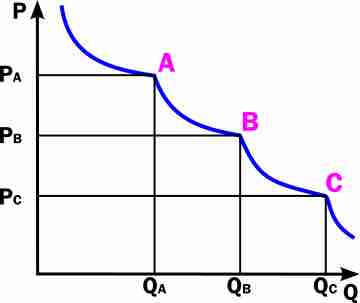Demand-based pricing is any pricing method that uses consumer demand, based on perceived value, as the central element. These include: price skimming, price discrimination and yield management, price points, psychological pricing, bundle pricing, penetration pricing, price lining, value-based pricing, geo and premium pricing. Pricing factors are manufacturing cost, market place, competition, market condition, and quality of product.
Price skimming is a pricing strategy in which a marketer sets a relatively high price for a product or service at first, then lowers the price over time. It is a temporal version of price discrimination/yield management. It allows the firm to recover its sunk costs quickly before competition steps in and lowers the market price. Price skimming is sometimes referred to as riding down the demand curve. The objective of a price skimming strategy is to capture the consumer surplus. If this is done successfully, then theoretically no customer will pay less for the product than the maximum they are willing to pay. In practice, it is almost impossible for a firm to capture all of this surplus.
Price discrimination or price differentiation exists when sales of identical goods or services are transacted at different prices from the same provider.
Yield management is the process of understanding, anticipating and influencing consumer behavior in order to maximize yield or profits from a fixed, perishable resource, such as airline seats or hotel room reservations. As a specific, inventory-focused means of revenue management, yield management involves strategic control of inventory to sell it to the right customer at the right time for the right price. This process can result in price discrimination, where a firm charges customers consuming otherwise identical goods or services a different price for doing so. Yield management is a large revenue generator for several major industries; Robert Crandall, former Chairman and CEO of American Airlines, gave yield management its name and has called it "the single most important technical development in transportation management since we entered deregulation. "
Price points are prices at which demand for a given product is supposed to stay relatively high .

Demand-based Pricing
Illustration of price points, or concave-downward cusps on a demand curve (P is price; Q is quantity demanded; A, B, and C are the price points)
Psychological pricing or price ending is a marketing practice based on the theory that certain prices have a psychological impact. The retail prices are often expressed as "odd prices": a little less than a round number, e.g. $19.99 or £2.98. The theory is this drives demand greater than would be expected if consumers were perfectly rational. Psychological pricing is one cause of price points.
Product bundling is a marketing strategy that involves offering several products for sale as one combined product. This strategy is very common in the software business (e.g., bundle a word processor, a spreadsheet, and a database into a single office suite), in the cable television industry (e.g., basic cable in the United States generally offers many channels at one price), and in the fast food industry in which multiple items are combined into a complete meal. A bundle of products is sometimes referred to as a package deal or a compilation or an anthology.
Penetration pricing is the pricing technique of setting a relatively low initial entry price, often lower than the eventual market price, to attract new customers. The strategy works on the expectation that customers will switch to the new brand because of the lower price. Penetration pricing is most commonly associated with a marketing objective of increasing market share or sales volume, rather than to make profit in the short term.
Value-based pricing, or value-optimized pricing is a business strategy. It sets prices primarily, but not exclusively, on the value, perceived or estimated, to the customer rather than on the cost of the product, the market price, competitors' prices, or historical prices. The goal of value-based pricing is to align a price with the value delivered. It is based on the notion that a customer receiving high levels of value will pay a higher price than a customer receiving lower levels of value for the same product or service.
Geo (also called marketing geography or geomarketing) is a discipline within marketing analysis which uses geolocation (geographic information) in the process of planning and implementation of marketing activities. It can be used in any aspect of the marketing mix: the product, price, promotion, or place (geo targeting).